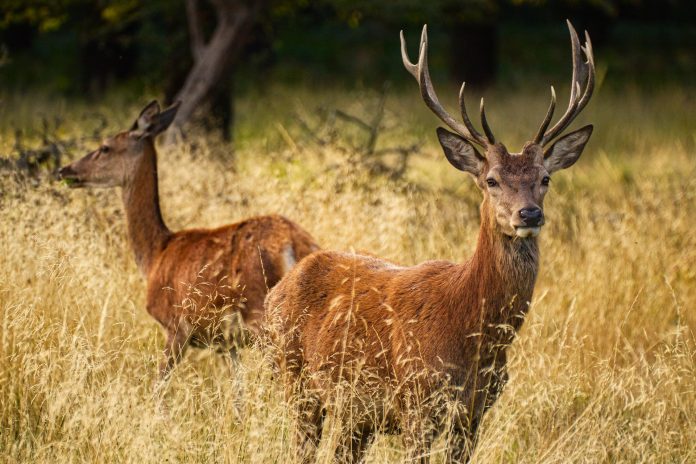I think about deer and turkey hunting during all parts of the year. Even when I can’t hunt them, you can find me out in the woods studying the herd and learning all that I can. For me, summer is not the time for beaches and mixed drinks with an umbrella, it’s the time to begin thinking about early season scouting. The antlers on this year’s crop of bucks are about halfway grown and now is the time to begin taking inventory of your herd for the upcoming season.
As shadows lengthen and evening rains cool us off a bit, bucks begin their summertime feeding frenzy in anticipation of the fall breeding season. Now is a great time to spot bachelor groups of bucks prowling about in the early evening and feeding in out of the way corners of fields. Fresh mowed hay fields are always a good bet to spot a feeding buck as are powerline right of ways and clear cuts. I’m not a big fan of scouting cameras, but they are a great way to keep an eye on what’s going on in your hunting area, but there are other ways. A sharp set of eyeballs and some good old-fashioned sitting and watching works just as well, if not better.
Summertime is also the time of year when the bigger, more mature bucks seem less aware that humans mean danger. They are out and about because they haven’t been pressured in months and they are feeling the need to feed, but they will shut down to nocturnal feeding patterns if pressured. The key to summertime scouting is to keep your distance and scout low impact.
Observation blinds are a great tool for scouting, the same blinds you hunt from can serve a dual purpose. Otherwise, build one on site that you can enter and exit quietly from downwind; they can be as simple as a few bales of hay or a screen of palmetto fronds strategically placed. Vehicles also can be effective when used correctly, especially electric hunting carts, but most of my scouting is done in my truck driving the perimeters of my hunting areas and utilizing a quality set of binoculars.
Now while out in the field this time of year, it’s not uncommon to encounter fawns. Just because you spot one lying all alone doesn’t mean you’ve discovered an “abandoned” fawn. Leave it alone, take a ic with your cell phone and hurry out of the area. I promise you, momma ain’t far away. As soon as you leave, she’ll be back to collect the little fella. There’s a reason she left him bedded down; she’s either off feeding and it was time for it’s nap or she hid him in hopes of drawing off a predator from the spot.
As always, if you have any feedback, suggestions or even just want to share a good hunting story, give me a shout at [email protected]. God bless and good hunting!

